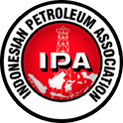Publications
Characterization of Seeped and Produced Oils: Uncovering Hydrocarbon Potential in Southwest Java Basin
Proceedings Title : Proc. Indon. Petrol. Assoc., 49th Ann. Conv., 2025
The occurrence of seeped oil near the boundary of Southwest and Northwest Java basins presents an interesting case, with potential correlations to prolific oil sources in the Northwest Java Basin, specifically from the Banuwati/Jatibarang or Talang Akar Formations. This study aims to characterize the seeped oil from Southwest Java Basin and the produced crude oil from the Jatibarang Field in Northwest Java Basin through isotopic, inorganic metal, and organic geochemical data. The research focuses on determining the biodegradation, source identification, and maturity level of these oils, while also exploring the genetic relationship between the seeped and produced oils. A quantitative approach was employed, involving chemical analysis of eight seeped oil samples from one location and two produced oil samples from wells JTB-X and JTB-Y. Biomarker interpretation was used to assess biodegradation, source, and maturity. The results showed that the seeped oils were moderately biodegraded (PM-5), while the produced oils were lightly biodegraded (PM-1). Geochemical data revealed three distinct oil groups: (1) seeped oils with high marine and terrestrial organic matter inputs, (2) oils generated from non-marine coaly sources under oxic conditions, and (3) oils from terrestrial sources in a fluvio-deltaic environment. The isotopic and inorganic metal data indicated that the seeped oils from Southwest Java and produced oils from Northwest Java Basins have different sources. This finding confirms the presence of an active petroleum system with organic-rich and mature source rocks in the onshore area of Southwest Java Basin. The results suggest a different basin evolution between Southwest and Northwest Java Basin, opening opportunities for further geological and geophysical studies and potential hydrocarbon discoveries in the Southwest Java Basin.
Log In as an IPA Member to Download Publication for Free.
